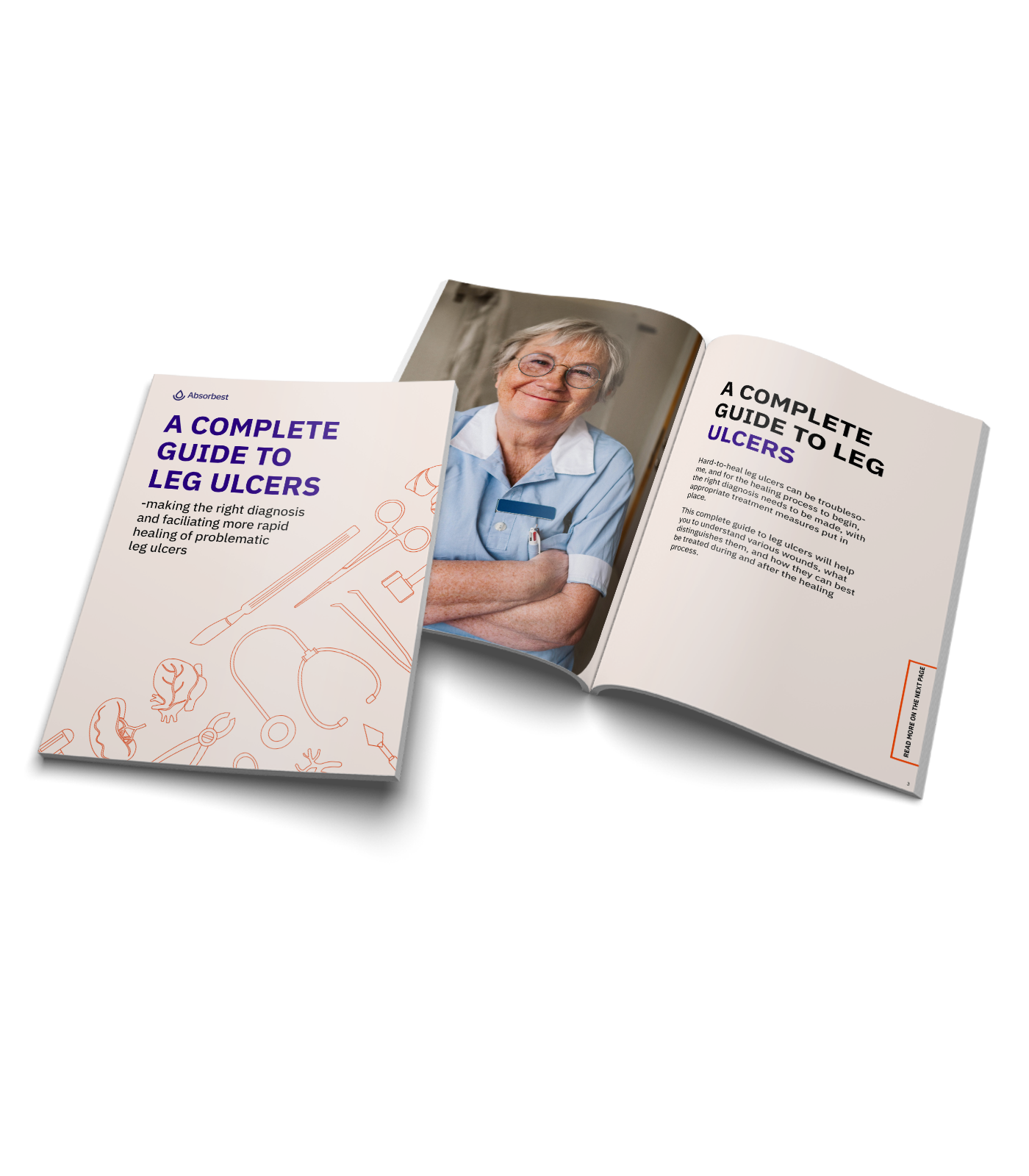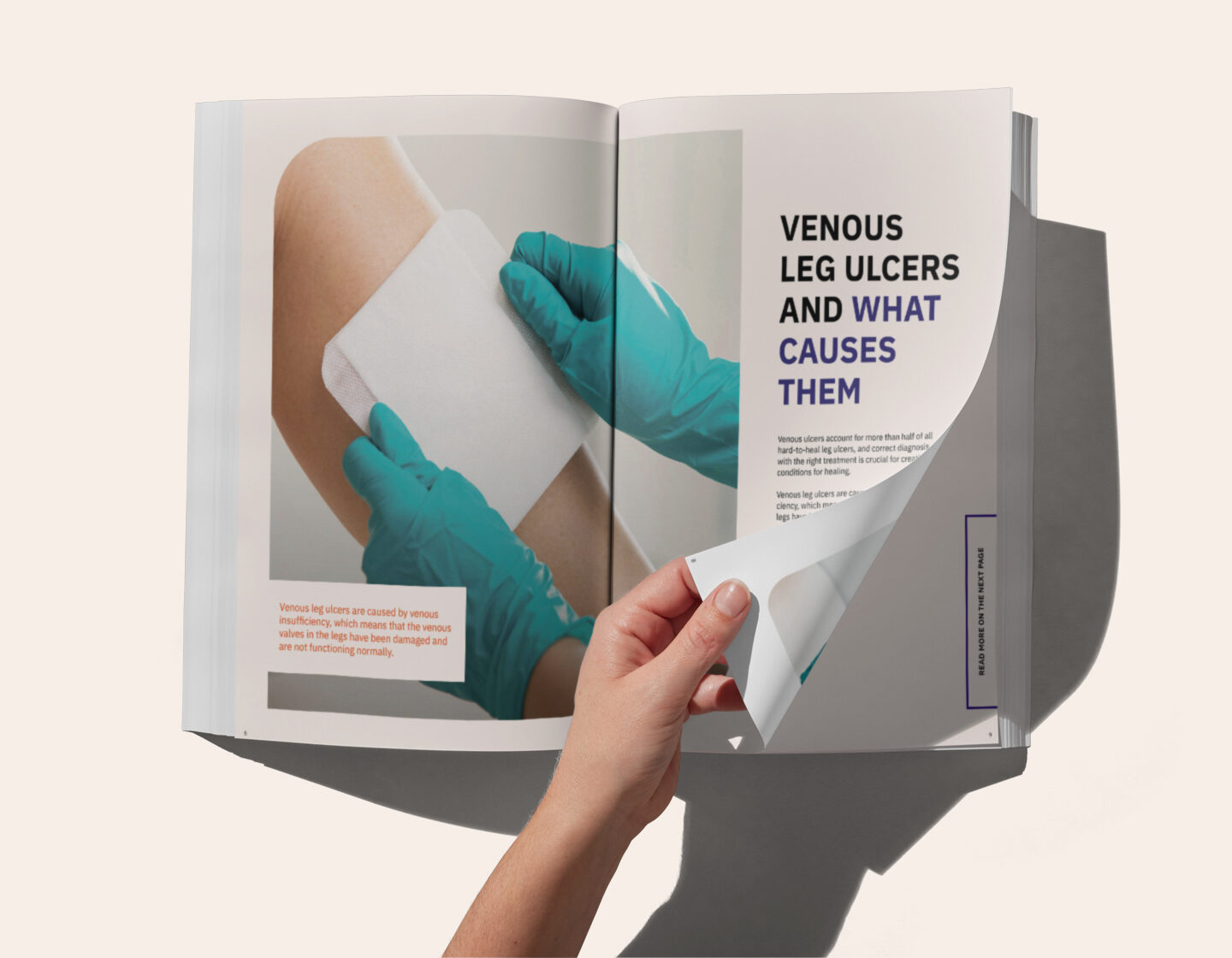
Please provide your details and we will send you a download link to your e-mail.
Our “Complete Guide to leg ulcers” focuses primarily on hard-to-heal venous leg ulcers.
Learn more about treatment measures, healing phases, cleaning, and appropriate dressings, which can affect and drive the long-term healing process.

Learn more about identifying various leg ulcers

What are the underlying causes of venous leg ulcers?

Guiding: from origin to the healing process and aftercare

Please provide your details and we will send you a download link to your e-mail.
Venous leg ulcers are caused by venous insufficiency, which means that the venous valves in the legs have been damaged and are not functioning normally. The venous valves are designed to help push blood and lymph around the body in a constantly circulating flow. Dysfunctional venous valves mean that a significant portion of fluid remains in the lower limbs, which results in oedema – a visible swelling caused by a build-up of fluid.
Oedema and increased pressure in the lower legs leads to the skin being damaged from the inside and the potential for ulceration. External factors, such as a blow or impact to a lower leg with venous insufficiency, may also cause an exuding wound to develop. The fluid, known as exudate, leaks from the wound and a hard-to-heal, exuding venous ulcer forms.

Ann-Mari Fagerdahl, Associate Professor/Nurse, Wound Centre, Södersjukhuset, Sweden